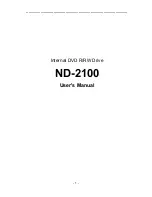
49
Configuration and adjustment variables
Modbus
address
CANopen
address
Code
Read/
Write
Name/Description/Possible values
9701
2043 / 2
UnS2 R/WS
Nominal motor voltage (motor 2) given on the rating plate
Unit: 1 V
Factory setting: According to drive rating
Adjustment range: According to drive rating:
ER23-...K: 100 to 240 V
ER23-.../3K: 100 to 240 V
ER23-.../4K: 100 to 500 V
ER23-...6K: 100 to 600 V
9702
2043 / 3
FrS2
R/WS
Nominal motor frequency (motor 2) given on the rating plate
Unit: 0.1 Hz
Factory setting: if bFr = 50: 500 if bFr = 60: 600
Adjustment range: 100 to 5000
Note: The ratio
must not exceed the following values:
ER23-...K: 7 max.
ER23
-.../
3K: 7 max.
ER23
-.../
4K: 14 max.
ER23
-.../
6K: 17 max.
9703
2043 / 4
nCr2
R/WS
Nominal motor current (motor 2) given on the rating plate
Unit: 0.1 A
Factory setting: According to drive rating
Adjustment range: 0.25 to 1.5 In (1)
(1) In corresponds to the nominal drive current indicated in the Installation Manual and on the
drive rating plate.
9704
2043 / 5
nSP2 R/WS
Nominal motor speed (motor 2) given on the rating plate
Unit: 1 rpm
Factory setting: According to drive rating
Adjustment range: 0 to 32767
If, rather than the nominal speed, the rating plate indicates the synchronous speed and the slip
in Hz or as a %, calculate the nominal speed as follows:
Nominal speed = Synchronous speed x
or
Nominal speed = Synchronous speed x
(50 Hz motors)
or
Nominal speed = Synchronous speed x
(60 Hz motors)
9706
2043 / 7
COS2 R/WS
Motor Cos Phi (motor 2) given on the rating plate
Unit: 0.01
Factory setting: According to drive rating
Adjustment range: 50 to 100
9707
2043 / 8
UFt2
R/W
Selection of the type of voltage/frequency ratio for motor 2
Factory setting: 2
0 = "L": Constant torque for motors connected in parallel or special motors
1 = "P": Variable torque for pump and fan applications
2 = "n": Sensorless flux vector control for constant torque applications
3 = "nLd": Energy saving, for variable torque applications not requiring high dynamics (behaves
in a similar way to the P ratio at no load and the n ratio on load).
UnS (in volts)
FrS (in Hz)
100 - slip as a %
100
50 - slip in Hz
50
60 - slip in Hz
60
















































